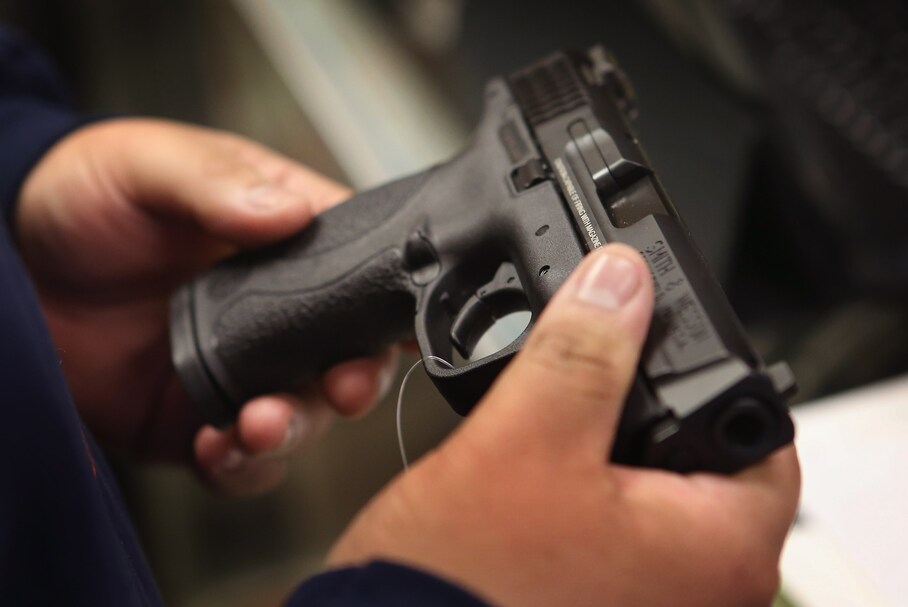Forget New Gun Laws. Here's How To Reduce Illegal Gunfire
This article originally appeared in the Washington Post in 2016.
Instead of focusing on doomed legislation, we should try something different.

Then, while discussing the increased burdens placed upon officers by our society, the president said that in some neighborhoods it is easier for a teenager to buy a Glock than a book.
That line was uttered in the context of the burdens facing police, but many of the officers watching were taken aback: Although we had lost five brothers, Texas law enforcement had never blamed the gun.
Obama was making an unmistakable reference to the gun-control agenda he has passionately advocated since the horrors at Sandy Hook. Cops, such as Dallas Police Department Chief David O. Brown, recognize America’s serious gun-violence problem. But many of the Dallas-area cops I know felt that the line foreshadowed a renewed push of efforts to restrict assault rifles — this time, in the names of our fallen brothers.
And the political morass created every time such measures are put forth has not improved anything. Again and again, calls to increase restrictions on assault rifles and magazines get nowhere, despite bipartisan agreement on what I believe is the most important thing: We all want to reduce gun violence.
We need to think of different ways to accomplish that goal.
I and many of my fellow officers believe reducing the oppressive levels of daily gun violence that plague American cities is possible without even raising the question of new gun-control legislation.
While they grab attention, justifiably, mass shootings remain outliers. Two-thirds of gun deaths are suicides. The tyranny of everyday shootings — the 12,000 homicides a year that happen so regularly that some people don’t even call 911 anymore — follow patterns completely divorced from the weapons used. These shootings have much more to do with the realities of life for the poor, the drug-addicted, the mentally ill and the criminal.
Gun violence is most acute among young black men. The National Council on Crime and Delinquency says the homicide rate per 100,000 of white males between 15 and 19 years old is 1.8. For Hispanic males, it’s 14.6.
For African American males, it’s a staggering 50.6 per 100,000.
Only recently, Richmond, Calif., had among America’s highest per capita rates of gun violence. In 2009, there were 47 homicides among 100,000 residents. Officials there theorized that a few bad actors caused most of the problem. As it turned out, 70 percent of their gun violence in 2008 was caused by fewer than 1 percent of the city’s residents. This isn’t unique: in Cincinnati, less than 1 percent of the city’s population was responsible for 74 percent of homicides in 2007.
Richmond developed an innovative, controversial program: They identified the 50 people most likely to shoot someone and engaged with them, even paying them to participate.
The city provided career help, training, resume writing and health care. It asked people what they feared and helped them create plans to mitigate those fears.
Critics called it “paying gang members not to shoot people.”
It was more than that. And it worked.
From 2007 to 2012, the city experienced a 61 percent reduction in homicides. It turned out that the money was nowhere near as important as people had thought — people still show up to the meetings even though no one is paying them anymore. The interventions steered potential killers onto a better path.
“We don’t ask them to turn in their guns,” Devone Boggan, the neighborhood safety director of Richmond’s Office of Neighborhood Safety, told me. “Considering we aren’t negotiating the war zones they do daily, it would reek of privilege for us to make that request.”
The program aims to teach participants that they don’t have to settle their conflicts with guns. Boggan says the process has repeatedly demonstrated that most put their guns down themselves.
Through data-driven decision-making, public-private partnerships and other new methods, the program is expanding. Cities around the United States have taken note. Toledo, Ohio; Washington, D.C.; and several cities in California are considering the model.
Others are developing their own innovative programs. Chicago’s Strategic Subject List seeks information about those at risk of gun violence through who they know — actual social networks. Albany, N.Y., has seen success of the predictive accuracy of the Violent Offender Identification Directive tool.
These programs successfully save the lives of young black men by reducing gun violence. And none of them depend on passing new gun laws.
Americans need to think beyond guns, and to confront the underlying social and economic problems that cause gun violence. Programs like these are proving it is possible to significantly reduce gun deaths without new gun-control measures — and without breaking the bank.
Admittedly, one thing raised by the prospect of police using “data-driven” solutions to a problem is the specter of government data gathering on civilians. When civil libertarians hear phrases like “data-driven crime-reduction,” their ears perk up — because it usually means government will be increasing the kinds of data officials access, and the ways those data will be used. Americans are right to view such measures skeptically, and groups like the Brennan Center for Justice and the American Civil Liberties Union exist to serve as champions of personal privacy and liberty.
Regardless of politics, I believe all Americans — from NRA lifetime members to Mayors Against Illegal Guns — truly want to reduce the number of people killed every year by guns. So we should consider programs that are much easier for elected officials to pass, and have a much higher chance of success.
We owe at least that to our children, and to the officers killed and wounded in Dallas.
